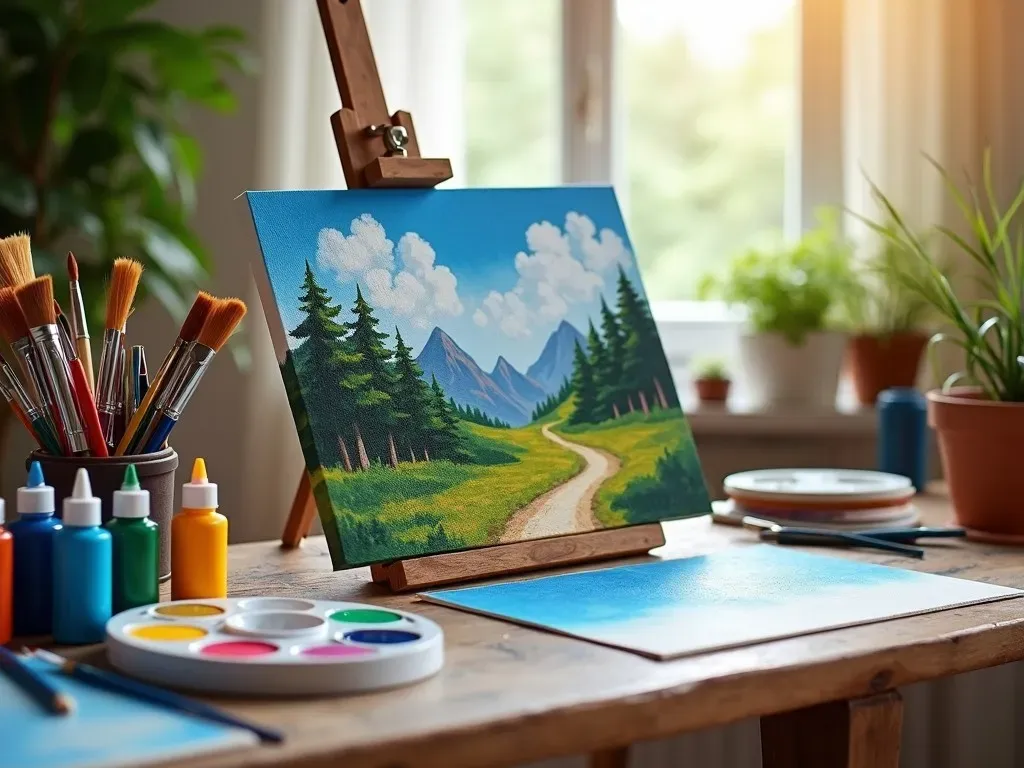When it comes to the art of painting, one name stands out prominently: Bob Ross. Known for his soothing voice, gentle demeanor, and iconic style, Bob Ross has captured the hearts of millions while teaching them the joys of painting. So, does Bob Ross paint with oil or acrylic? The answer is simple: Bob Ross primarily used oil paints in his artwork.
Oil vs. Acrylic: Understanding Bob Ross’s Choice
The choice of paint significantly affects the outcome of any painting. Bob Ross favored oil paints due to their unique properties, allowing for better blending and a more vibrant finish. Here is a comparison table that outlines the differences between oil and acrylic paints in general, which helps to appreciate the context of Bob Ross’s choice:
| Feature | Oil Paints | Acrylic Paints |
|---|---|---|
| Drying Time | Slow (days to weeks) | Fast (minutes to hours) |
| Texture | Creamy and smooth | Thick and plastic-like |
| Color Vibrancy | Rich and deep | Can appear more vibrant when dry |
| Blending | Excellent for smooth transitions | Requires quick work to blend |
| Clean-Up | Requires solvents like turpentine | Simple clean-up with water |
| Layering Technique | Can be glazed for depth | Layers dry quickly, making glazing tricky |
Bob Ross’s Painting Technique
Bob Ross was a master of the wet-on-wet technique, also known as "alla prima." This method allows artists to touch wet paint directly onto wet paint, which enhances blending and offers a mastery over textures that is particularly effective with oil paints. For those interested in trying Bob Ross’s style, here’s what you need to know about the tools and materials he used:
- Oil Paints: Bob preferred specially formulated oil paints designed for the wet-on-wet technique.
- Brushes: He used a variety of brushes including fan brushes and round brushes, which contributed to the creation of clouds, trees, and other textures.
- Canvas Size: Bob Ross typically painted on an 18 x 24-inch canvas, which provided ample space for his landscapes.

Adapting Bob Ross’s Techniques with Acrylics
Although Bob Ross primarily used oil paints, many artists have successfully adapted his Techniques for use with acrylic paints. It is important to note that acrylic paint dries faster than oils, which can create challenges when trying to blend colors. Here are some tips for using acrylics in a Bob Ross style:
- Work Quickly: Due to their fast drying times, you must act swiftly to achieve the desired effects.
- Use a Retarder: Adding a retarder to your acrylic mixture can extend the drying time, allowing for more blending time and depth.
- Misting: A light mist of water can help keep acrylic paints workable, although caution should be taken not to overdo it.

You can find various tutorials online that guide you through the process of painting in Bob Ross’s style using acrylics. For example, articles like “Can You Paint Bob Ross Style With Acrylics?” from Sustain The Art provide insights on how to successfully navigate these adjustments.
Frequently Asked Questions (FAQ)
Q: Can I paint like Bob Ross with acrylic paints?
A: Yes, you can adapt Bob Ross’s techniques to use acrylic paints, but be mindful of their fast drying time.
Q: What size canvas did Bob Ross use?
A: Bob Ross typically painted on an 18 x 24-inch canvas.
Q: Is the Bob Ross technique compatible with acrylics?
A: While Bob Ross primarily used oils, his wet-on-wet technique can be used with acrylics; just remember to adjust for the different drying times.
Q: Which paints are best for beginners wanting to follow Bob Ross’s style?
A: For beginners, a set of quality oil paints or student-grade acrylics can be used. Choose according to your comfort level and willingness to manage drying times.
Exploring Bob Ross’s Legacy
Bob Ross’s contributions to the world of art extend well beyond his choice of paints. He has inspired countless people to take up painting, embracing creativity and self-expression. His unique approach cultivated a sense of calm and serenity, encouraging viewers to discover and enhance their own artistic abilities. The accessibility of his teachings is celebrated not just for the techniques he employed, but for the philosophy he promoted.
Fun Fact: Bob Ross was a sergeant in the United States Air Force and didn’t start painting until he was in his thirties! His journey is a testament to the idea that it’s never too late to pursue your passion.

Conclusion: The Lasting Impact
Bob Ross’s legacy as a painter stretches far beyond his choice of oil paints. By imparting joy and well-being through art, he has become a cultural icon. Whether you choose oils or acrylics, the essence of Bob Ross’s painting lies in the enjoyment of the process and the encouragement to embrace your artistic voice.
For those interested in pursuing either oil painting or acrylics in Bob Ross’s style, there are myriad resources available, including online tutorials, books, and community studios. For more detailed insights on practicing in his style, you can check out the Bob Ross Foundation for a wealth of information and techniques.

